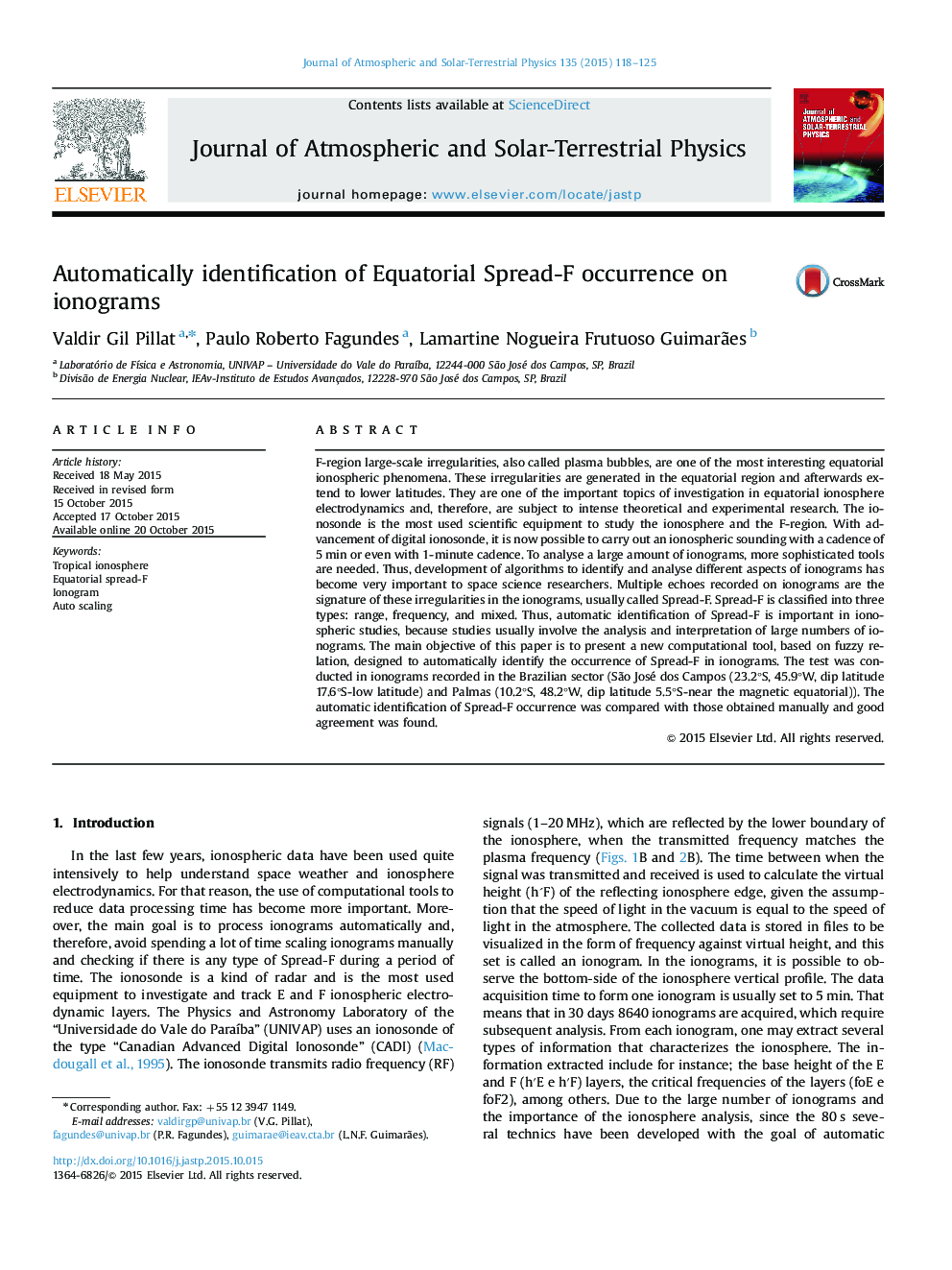| Article ID | Journal | Published Year | Pages | File Type |
|---|---|---|---|---|
| 1776273 | Journal of Atmospheric and Solar-Terrestrial Physics | 2015 | 8 Pages |
•The model identifies and classifies Spread-F.•We are developing a new model to analyze ionosphere lower height profile.•The ionosphere profile is a function of the reflected EM wave frequency (1–20 MHz).•The ionosphere data is obtained from an ionosonde.•The Fuzzy Relation model has shown some robustness and the results are satisfactory.
F-region large-scale irregularities, also called plasma bubbles, are one of the most interesting equatorial ionospheric phenomena. These irregularities are generated in the equatorial region and afterwards extend to lower latitudes. They are one of the important topics of investigation in equatorial ionosphere electrodynamics and, therefore, are subject to intense theoretical and experimental research. The ionosonde is the most used scientific equipment to study the ionosphere and the F-region. With advancement of digital ionosonde, it is now possible to carry out an ionospheric sounding with a cadence of 5 min or even with 1-minute cadence. To analyse a large amount of ionograms, more sophisticated tools are needed. Thus, development of algorithms to identify and analyse different aspects of ionograms has become very important to space science researchers. Multiple echoes recorded on ionograms are the signature of these irregularities in the ionograms, usually called Spread-F. Spread-F is classified into three types: range, frequency, and mixed. Thus, automatic identification of Spread-F is important in ionospheric studies, because studies usually involve the analysis and interpretation of large numbers of ionograms. The main objective of this paper is to present a new computational tool, based on fuzzy relation, designed to automatically identify the occurrence of Spread-F in ionograms. The test was conducted in ionograms recorded in the Brazilian sector (São José dos Campos (23.2°S, 45.9°W, dip latitude 17.6°S-low latitude) and Palmas (10.2°S, 48.2°W, dip latitude 5.5°S-near the magnetic equatorial)). The automatic identification of Spread-F occurrence was compared with those obtained manually and good agreement was found.
